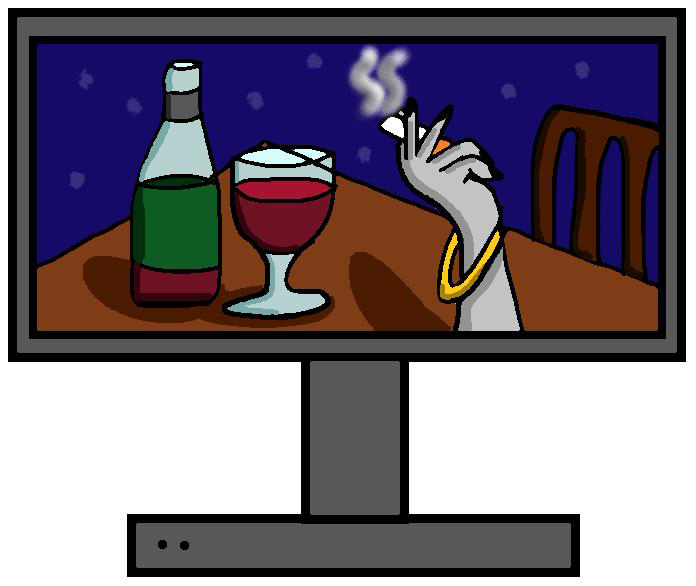Media’s Glorification of Problematic Practices Demands Discourse
October 28, 2022
What do The Simpsons, Scarface, almost any major artist who died before turning 30, and pretty much the entirety of Quentin Tarantino’s filmography have in common? Apart from our obsession with them, the fact that they showcase some form of illegal or dangerous behavior as either perfectly normal or altogether stylish. Regardless of one’s opinion on any piece of media, the tone through which a pen, lens, or microphone captures a sensitive situation can have serious consequences. Though it would be reckless to censor sensitive content, it is of the utmost importance that we make the distinction between accurate and glorified depictions of dangerous behaviors in pop culture.
Granted, it is easy to argue that watching violence doesn’t correlate with committing it. Most of us are aware of how actions in a TV show, videogame, or film vary from those in our world. But it’s every exception, every outlier, and every case where one’s brain blurs these lines that makes our media’s portrayals of violence worrying. There are many people out there with violent thoughts, tendencies, and impulses, for which constantly seeing violence as gratifying and casual may worsen their state. According to a study about public school shootings, “…63 percent of the students committing violent acts showed interest in violence in movies, video games, or books.” Not everyone is lucky enough to have good mental health or someone to talk to, which can lead to the influence of this violent content being the nail in the coffin for these individuals’ right-minded thinking and therefore, awful acts may be committed. Though relatively uncommon, the effects of witnessing violence in mass media on a person’s behavior are worth noting for those few times when it may have its toll (counseling.org).
“There is a responsibility for the artist to create with a conscience,” said Film Arts Teacher Ian McAvoy. With our contemporary world’s technology and easy access to information, McAvoy believes, “There is a problem with the intended audience for a lot of these creations; it’s a lot more difficult to accurately reach them. Oftentimes, parents have no idea what their kid is watching.” He added, “We need to make sure we figure out a way where these creations aren’t readily available to all folks.”
For many households, conversations regarding substance addiction are relatively taboo or too slight to make an impact on children. Add this on top of the ever-lasting social relevance of TV shows like Euphoria that (intentionally or not) pique interest in addictive substance consumption, and it’s no surprise that almost half of U.S. teenagers have tried illicit drugs by the time they reach grade 12 and a fourth of students in grade 8 have abused alcohol at least once, according to the National Center for Drug Abuse Statistics (drugabusestatistics.org).
“We as a society reflect the media because we are simultaneously consuming and being a part of it,” said Junior Pilar Vitug. “The line between [thematically dangerous] content being propaganda or just glorification doesn’t really seem to matter because it’s working [towards perpetuating the behavior it presents], whether it’s intentionally advocating for it or not,” said Vitug. Vitug gave the example of 13 Reasons Why, a Netflix TV series that “…was associated with a 28.9 percent increase in suicide rates among U.S. youth ages 10-17 in the month (April 2017) following (its) release,” according to the National Institute of Mental Health (nimh.nih.gov).
It is important, however, to remember that most of these mediums are subjective by nature. What one person deems as an overly romanticized portrayal another may consider horrifying, and vice versa. It is also important to acknowledge that artists cannot be held accountable for all the effects of their art, as the desired meaning is considerably altered by each individual’s perception. At the end of the day, it’s the discourse we create around potentially harmful content that allows us to further educate ourselves on important topics.
Collaborators have the power to stop dangerous media from entering the mainstream by having important conversations with creators about the work’s potential harms and how to craft a different effect. We as the audience have a say in what is produced through our consumption habits. This influence must not be taken lightly.


